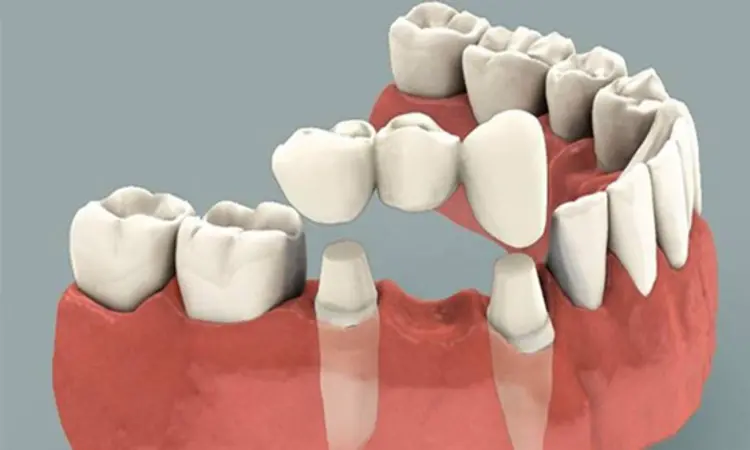- Home
- Medical news & Guidelines
- Anesthesiology
- Cardiology and CTVS
- Critical Care
- Dentistry
- Dermatology
- Diabetes and Endocrinology
- ENT
- Gastroenterology
- Medicine
- Nephrology
- Neurology
- Obstretics-Gynaecology
- Oncology
- Ophthalmology
- Orthopaedics
- Pediatrics-Neonatology
- Psychiatry
- Pulmonology
- Radiology
- Surgery
- Urology
- Laboratory Medicine
- Diet
- Nursing
- Paramedical
- Physiotherapy
- Health news
- Fact Check
- Bone Health Fact Check
- Brain Health Fact Check
- Cancer Related Fact Check
- Child Care Fact Check
- Dental and oral health fact check
- Diabetes and metabolic health fact check
- Diet and Nutrition Fact Check
- Eye and ENT Care Fact Check
- Fitness fact check
- Gut health fact check
- Heart health fact check
- Kidney health fact check
- Medical education fact check
- Men's health fact check
- Respiratory fact check
- Skin and hair care fact check
- Vaccine and Immunization fact check
- Women's health fact check
- AYUSH
- State News
- Andaman and Nicobar Islands
- Andhra Pradesh
- Arunachal Pradesh
- Assam
- Bihar
- Chandigarh
- Chattisgarh
- Dadra and Nagar Haveli
- Daman and Diu
- Delhi
- Goa
- Gujarat
- Haryana
- Himachal Pradesh
- Jammu & Kashmir
- Jharkhand
- Karnataka
- Kerala
- Ladakh
- Lakshadweep
- Madhya Pradesh
- Maharashtra
- Manipur
- Meghalaya
- Mizoram
- Nagaland
- Odisha
- Puducherry
- Punjab
- Rajasthan
- Sikkim
- Tamil Nadu
- Telangana
- Tripura
- Uttar Pradesh
- Uttrakhand
- West Bengal
- Medical Education
- Industry
Innovations in Dentistry: Monolithic zirconia fixed partial dentures with flexible connectors solve abutment teeth

Japan: In the ever-evolving landscape of dental care, a breakthrough has emerged to address a persistent challenge faced by patients and practitioners: nonparallel abutment teeth. Traditional fixed partial dentures (FPDs) often struggle to accommodate such irregularities, compromising aesthetics, durability, and functionality. However, a pioneering solution leveraging monolithic zirconia coupled with flexible connectors is poised to revolutionize restorative dentistry.
A viable treatment option for patients with nonparallel abutment teeth is a monolithic zirconia fixed partial denture (MZFPD) with both rigid and nonrigid connectors, the study published in the Journal of Prosthetic Dentistry has shown.
Recognizing the limitations of conventional approaches, dental professionals have embraced the integration of monolithic zirconia in FPD fabrication. Renowned for its exceptional strength, durability, and biocompatibility, monolithic zirconia offers unparalleled stability and aesthetics, making it an ideal choice for restorations. However, adapting these restorations to accommodate nonparallel abutment teeth has remained a formidable challenge—until now.
The clinical report by Yu Takaesu, Fukuoka Dental College, Fukuoka, Japan, and colleagues, describes the fabrication of a monolithic zirconia fixed partial denture using nonrigid and rigid connectors to overcome nonparallel abutment teeth.
A precise key and keyway in the ceramic material was designed with digital technology, improving biocompatibility, reducing material costs, and using esthetically superior nonmetallic materials.
Monolithic zirconia (MZ) fixed partial dentures (FPDs) have gained popularity for posterior prostheses because of their low cost, rapid production, high mechanical strength, excellent biocompatibility, and excellent short-term survival rates.
In patients with 1 or 2 missing teeth between nonparallel abutment teeth, prosthodontic treatment options may include implant-supported crowns or FPDs with a nonrigid connector, typically fabricated from metal by the lost-wax technique. However, ceramic crowns have been preferred over metal-ceramic crowns, and the development of computer-aided manufacturing (CAD-CAM) technology and computer-aided design has led to prostheses within the clinically acceptable marginal discrepancy range similar to those fabricated by the traditional lost-wax technique.
"Our clinical report presents treatment using a cantilever MZFPD with rigid and nonrigid connectors to overcome nonparallel abutment teeth," the researchers wrote. "This MZFPD has adapted to teeth abutment at a clinically acceptable level and has been successful for 3.5 years."
Digital technology facilitated reduced material costs, precise design, enhanced esthetics, and improved biocompatibility through monolithic zirconia use. However, long-term outcomes or potential complications associated with using nonrigid and rigid connectors in MZFPDs are to be studied in the future.
Reference:
Takaesu, Y., Isshi, K., Toguchi, T., & Matsuura, T. (2024). Providing a monolithic zirconia fixed partial denture with rigid and nonrigid connectors to overcome nonparallel abutment teeth. The Journal of Prosthetic Dentistry. https://doi.org/10.1016/j.prosdent.2024.03.043
Dr Kamal Kant Kohli-MBBS, DTCD- a chest specialist with more than 30 years of practice and a flair for writing clinical articles, Dr Kamal Kant Kohli joined Medical Dialogues as a Chief Editor of Medical News. Besides writing articles, as an editor, he proofreads and verifies all the medical content published on Medical Dialogues including those coming from journals, studies,medical conferences,guidelines etc. Email: drkohli@medicaldialogues.in. Contact no. 011-43720751


